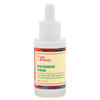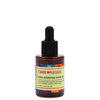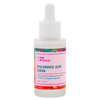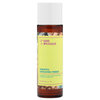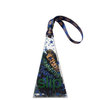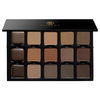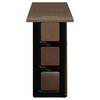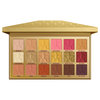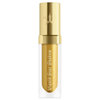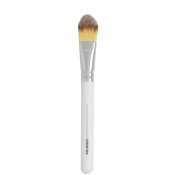
Natural or synthetic brushes? Disposable or reusable makeup sponges? With so many foundation applicators on the market, it can feel overwhelming to pick the right one. So we’ve compiled our best advice on the topic, with the help of Kindra Mann, a makeup artist with more than ten years of experience who counts Gabrielle Union and Rosario Dawson among her clients.
According to Mann, some formulations work best with specific applicators (for example, to get the most even coverage with powder foundation, a natural-bristle brush is your best bet)—but often, it just comes down to personal preference. “Whatever applicator you feel most comfortable with is the way to go, as long as you blend, blend, blend,” she says. Here are her specs for common foundation applicators, plus recs for keeping them clean.
Rounded, Reusable Makeup Sponge
Best for: smooth, even coverage with no visible lines; liquid foundation
Our pick: beautyblender, $19.95 | shop it

Run-of-the-mill disposable makeup sponges—you know, the disc- or wedge-shaped ones you find in multipacks at the drugstore—have edges that can leave behind noticeable streaks. But a good-quality, reusable, rounded makeup sponge applies foundation flawlessly and can even be used to buff out mistakes. They can also be used to build full coverage with a powder foundation, explains Mann, since they deposit more product onto skin. Like many makeup artists, Mann is a big fan of the egg-shaped beautyblender, which she relies on to “seamlessly blend liquid foundation.”
Sponge Care
Keep in mind that you’ll have to wash any reusable sponge frequently to remove any caked-on product (see our guide to cleaning sponges here). Mann recommends doing so at least once a week.

Foundation Brushes
Best for: building natural-looking coverage; easy blending and contouring with any type of foundation
Our natural-hair pick: Wayne Goss Brush 13, $53 | shop it (left)
Our synthetic-bristle pick: Obsessive Compulsive Cosmetics Brush #002, $24 | shop it (right)

Natural brushes hold powder foundation much better than synthetic ones, which results in a softer, more natural finish—and they’re particularly good for building even, light to medium coverage. You’ll see bristles made from a variety of animal hair types, including squirrel, goat, and mink (Wayne Goss Brush 13, for instance, is made with ultra-soft goat hair, sourced cruelty-free). When using liquid or cream foundations, you can go with natural or synthetic brushes for a smooth application. Brushes are also ideal for contouring along the hairline, jawline, cheeks, and nose.
Brush Care
Check out our this guide, which outlines best practices for cleaning and storing your beloved brushes to keep them in tip-top shape. As with sponges, Mann recommends washing brushes once a week (for drying, we trust nothing but Benjabelle Brush Trees!). And avoid storing your tools in a makeup bag or case. “They’re a breeding ground for germs,” explains Mann. “If you’re packing a brush or sponge for travel, I recommend keeping it in a zip-close bag to avoid getting dirt on the tool—or on the inside of your bag.”

Your Fingers
Best for: BB or CC cream or tinted moisturizer, especially on dry skin
Mann suggests using your fingers when applying sheer base products to dry skin, so that you can feel any rough patches and be extra gentle in those areas. The heat from your hands also helps the product absorb into your skin; especially beneficial, says Mann, when using a hydrating BB or CC cream.



